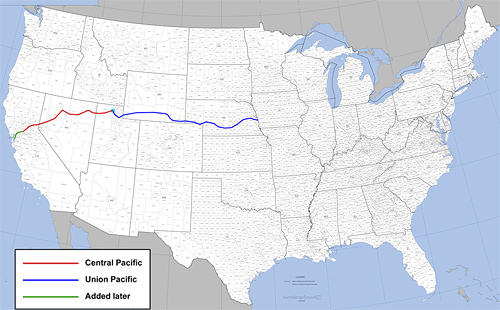
Source: Transcontinental Railroad Route, Wikipedia
In 1862, the United States Congress passed the first Railroad Act, contracting two companies to begin the construction of the Transcontinental Railroad. The Union Pacific Railroad Company began laying tracks in Omaha, Nebraska and worked west, while the Central Pacific Railroad Company started in Sacramento, California and proceeded eastward. Eventually, the two sets of tracks met at Promontory Summit, Utah, six years after construction began. When finished, the Transcontinental Railroad spanned the vast territory between California and the Missouri River, cutting the travel time through this region down to six days rather than four to six months.

Source: Transcontinental Railroad Route, Wikipedia
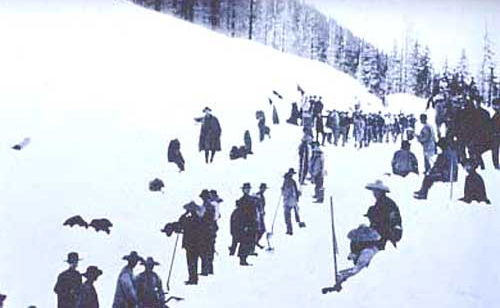
Source: Chinese railroad workers in snow, Wikipedia
Photo of the Transcontinental Railroad construction workers in the snowy mountains. Notice that most of these workers are Chinese laborers who played a major role in the completion.
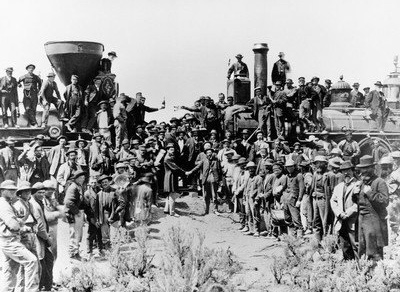
Source: Promontory Summit, Utah, The Transcontinental Railroad
This is the famous photo at Promontory Summit, Utah (now Northern Utah) of the joining of the railroad track, completing the Transcontinental Railroad on May 10, 1869.
Better transportation allowed for increased commerce between the states. Within the first decade of its use, nearly 50 million dollars of cargo was transported across the Transcontinental Railroad. This trade sparked a manufacturing boom in the recently industrialized East by keeping it supplied with minerals mined in the western regions. Additionally, the West began to catch up with the Eastern way of life as the products of the manufacturing boom flowed to the frontier. Ultimately, the trade produced by the Transcontinental Railroad accelerated the progress of the entire country.
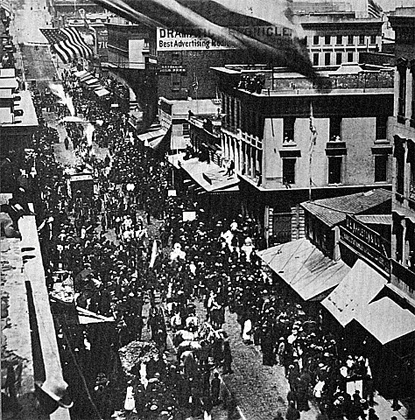
Source: Celebration of completion; Foundsf.org
Photograph of the crowds (Montgomery at Washington Streets in San Francisco) celebrating news of the completion of the Transcontinental Railroad on May 9, 1869.
Evidence of progress in the West was rapid settlement of people. In fact, the settlement of the West may have been the single most important effect of the Transcontinental Railroad. After the railroad's construction, traveling became much simpler, and families flocked west. Soon, new railways branched off of the Transcontinental Railroad, and others ran parallel to it, creating a network of tracks that transformed the West from an unpopulated wilderness to a thriving region of mining and agriculture.
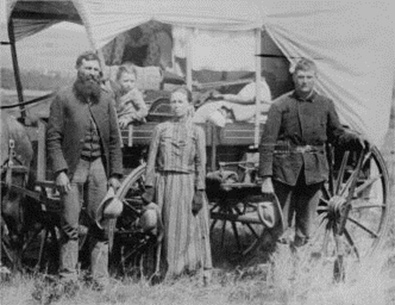
Source: American West Settlers; Wikimedia
This is a photo of a typical family who settled the West after the railroad opened the West. Families such as this would make trips with covered wagons to move all of their possessions and animals.
![]()
Source: Transcontinental Railroad, AIHE, Teacher Tube
Click here to download the comic strip template.